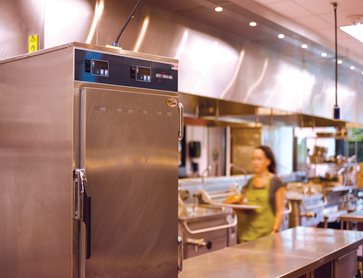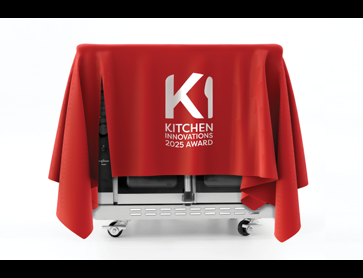Alto-Shaam expands its partnership with EMC Hospitality in Hawaii, promoting its full range of commercial kitchen equipment to help customers find innovative solutions.
Alto-Shaam Insights
As a company, we believe fresh ideas are the key ingredients to great food. Follow our blog to read about the latest culinary trends and to see how Alto-Shaam is pioneering the foodservice industry with innovative kitchen equipment technologies.
Sign-up for our E-Newsletter
 Decatur Township Schools Boost Meal Service with Alto-Shaam Combi Ovens
Decatur Township Schools Boost Meal Service with Alto-Shaam Combi Ovens
Discover how MSD Decatur Township schools are serving hundreds—sometimes thousands—of delicious meals a day with ease, thanks to the power and versatility of Alto-Shaam combi ovens.
 Alto-Shaam to preview latest innovation for high-quality and high-volume cooking at SNA 2025
Alto-Shaam to preview latest innovation for high-quality and high-volume cooking at SNA 2025
Alto-Shaam will showcase its award-winning Origin® and Prodigi™ ovens at SNA 2025, highlighting efficiency and K-12 benefits.
 Ridley School District Receives School Nutrition Foundation Grant for New Alto-Sham Holding Cabinet
Ridley School District Receives School Nutrition Foundation Grant for New Alto-Sham Holding Cabinet
The Ridley School District in Pennsylvania has been neamed the recipient of the Alto-Sham Equipment Grant for a $9,000 holding cabinet, by The School Nutrition Foundation (SNF).
 Alto-Shaam Announces Opening of UK Training Kitchen in Milton Keynes
Alto-Shaam Announces Opening of UK Training Kitchen in Milton Keynes
Alto-Shaam opens UK training kitchen in Milton Keynes to support demos, training, and customer engagement.
 Alto-Shaam Celebrates 70 Years, Features KI Award Recipient Innovation at NRA 2025
Alto-Shaam Celebrates 70 Years, Features KI Award Recipient Innovation at NRA 2025
Alto-Shaam celebrates 70 years, showcasing award-winning Origin™ ovens and other innovations at NRA 2025.
 Alto-Shaam rises up rankings for US Top Workplaces
Alto-Shaam rises up rankings for US Top Workplaces
Global foodservice manufacturer Alto-Shaam has been named a winner of the 2025 Top Workplaces USA Awards, ranking 4th for large companies in Southeastern Wisconsin. CEO Steve Maahs received a special Leadership award for high scores in leadership. This recognition highlights Alto-Shaam’s commitment to family values and career development.
 Alto-Shaam Further Enhances International Sales Team with New Appointment
Alto-Shaam Further Enhances International Sales Team with New Appointment
Alto-Shaam appoints Yan Garzon as Regional Sales Manager to further enhance its international sales team leveraging his 30+ years of foodservice expertise.
 Alto-Shaam appoints new Vice President of International Sales
Alto-Shaam appoints new Vice President of International Sales
Alto-Shaam promotes Simon Parke-Davis to VP of International Sales, overseeing global regions and enhancing customer experience.


